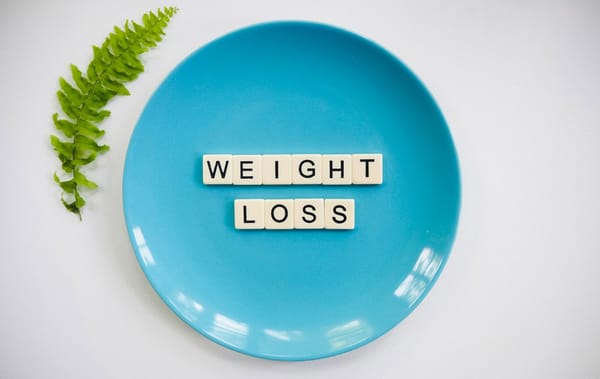Muscle Mass: How Much You Should Have and the Best Ways to Measure It

When most people think about fitness, the first numbers that come to mind are usually weight, BMI, or body fat percentage. There’s another metric that quietly shapes how strong, energetic, and metabolically healthy you are: muscle mass.
Muscle mass affects more than how you look. It influences the body's metabolism and corrects its posture and keeps joints mobile and contributes to overall lifetime health. A thorough understanding of your muscle mass will allow you to make better choices about training and nutrition whether you do strength training or track running or simply desire good health in aging.
What exactly is muscle mass?
Your body weight is made up of fat mass and lean mass. Your lean mass consists of water, muscles, organs, connective tissue and bones. When we talk about muscle mass we usually mean the total amount of muscle tissue in the body: skeletal muscle (the muscles that move your body), smooth muscle (in your organs), and cardiac muscle (your heart).
In everyday conversation, “muscle mass” typically refers to skeletal muscle - the tissue that grows stronger and larger with resistance training. Skeletal muscle plays a vital role because it supports strength as well as balance and mobility and metabolic health. Additionally it functions extensively to support illness recovery and support sustained independence through aging.
Why muscle mass matters
The metabolic activity level of muscle tissue is quite high. Muscle tissue generally raises your resting metabolic rate so more muscle means you burn more calories while doing nothing. But the benefits extend beyond calorie burn:
- Strength and function: Strong muscles strengthen joints and maintain posture and help you do everyday activities more easily.
- Healthy metabolism: Muscle boosts both glucose absorption and improves body's response to insulin.
- Better muscle support: Provides protection against falls and potential injuries.
- Healthy aging: Muscle maintenance decreases the risk of becoming frail and helps you stay independent.
How much muscle mass should you have?
There is no single “right” percentage of muscle for everyone. The appropriate level of muscle mass depends on a person's age and sex and their genetic background and their body size and their physical activity level. Researchers have published reference ranges to give context, but those are averages — not strict targets.
| Age Group | Men (%) | Women (%) |
|---|---|---|
| 18–35 years | 40–44% | 31–33% |
| 36–55 years | 36–40% | 29–31% |
| 56–75 years | 32–35% | 26–28% |
| 75+ years | 30–33% | 24–26% |
Rather than fixating on a single number, use these reference points to understand where you stand and to track trends over time. Physically active strength trainers generally perform at levels above their age-and-sex-based averages and sedentary individuals usually perform below those levels.
The important metric is change over time — are you maintaining or improving lean mass as you age?
How is muscle mass measured?
Measuring exact muscle mass requires specialized tools. Here are commonly used methods, from most accurate to most practical:
- DEXA (dual-energy X-ray absorptiometry): DEXA scans, remain the state-of-the-art testing method for body tissue separation.
- MRI and CT: Muscle volume and quality information is captured in highly detailed images using MRI and CT imaging technology.
- Bioelectrical impedance analysis (BIA): Body composition devices (including many smart scales) estimate lean mass, but results vary based on hydration status, food intake, and device quality.
- Ultrasound & Anthropometry / Skinfolds: Accessible methods that use muscle thickness, tape measures, calipers, circumferences. Less precise but helpful for tracking trends.
Tip: Instead of relying on a single snapshot, track trends. Regular measurements taken under similar conditions (same time of day, similar hydration and food status) are more informative than a one-off test.
Measuring muscle mass precisely can be challenging because it depends on many factors, and while comprehensive data is somewhat limited, existing research still offers useful guidance.
Signs you might have low muscle mass
You can detect suspected muscle loss without laboratory testing in some situations. Watch out for:
- Daily activities and exercise feel more difficult
- Endurance drops while overall fatigue grows
- Posture gets worse and it affects balance and mobility
- You feel tired while gaining weight with a consistent diet
Physical signs like these may mark early sarcopenia development that leads to muscle mass and function loss with aging. Sarcopenia begins mildly during midlife but becomes more extreme with physical inactivity and inadequate nutrition.
How to build and maintain muscle mass
You can build and maintain muscle at most stages of your lifetime without difficulty. A four-pronged approach uses weightlifting and proper nutrition and rest periods and lifestyle choices to produce results.
- Strength training — the non-negotiable
Muscle growth responds best to strength-building resistance exercises. Various effective methods include weight training, bodyweight movements, resistance bands, and functional activities. - Prioritize protein and total energy
Protein supplies your body with essential amino acids which support muscle repair and growth. - Include carbohydrates and healthy fats
Training performance benefits from carbohydrates which restore your muscle glycogen levels. For balanced eating ideas, see How to Build Healthy Eating Habits Without Feeling Restricted - Rest and recovery
Muscle tissue expands during resting periods. Adults who typically require seven to nine hours of quality sleep must keep a consistent sleep schedule and schedule breaks between intensive lifting sessions. Sleep quality plays a significant role in muscle recovery and growth. - Hydration and micronutrients
Water makes up most of the muscle tissue mass. Performing measures to maintain proper hydration assists both athletic performance and post-exercise healing. Vitamins and minerals including vitamin D, calcium and iron contribute to muscle function and energy maintenance. - Track performance
Monitor your resistance training progress by checking your strength gains during your lifts and through common task performance. Build muscle mass and quality by tracking steady progress in resistance training alongside strength gains that manifest in meaningful changes.
Also Read: How to Understand Your Food Cravings (and 5 Mindful Ways to Manage Them)
Are there downsides to more muscle?
For most people, higher muscle mass is beneficial. A few practical trade-offs to be aware of:
- Higher calorie needs to maintain larger muscle mass
- The decreased flexibility risk of unbalanced strength and mobility training sessions
- Your body's dimensions will change thus affecting your clothes' fit
You can control these potential downsides through balanced training education combined with proper diet implementation and consistent mobility maintenance exercises.
When to seek professional help
If you notice rapid or unexplained muscle loss, persistent weakness, or difficulty performing basic tasks, consult a healthcare professional. A clinician can screen for medical causes (hormonal issues, chronic illness, nutrient deficiencies), and allied professionals like registered dietitians and certified strength coaches can help design personalized nutrition and training plans.
Practical takeaway
Muscle mass serves as a vital measurable component that represents your health and functional fitness level. You should focus on strengthening and preserving your muscle tissue by engaging in consistent resistance exercise and eating enough protein and calories and maintaining proper sleep and hydration without worrying about exact muscle percentage averages.
| Component | Function | Health Implications |
|---|---|---|
| Muscle Mass | Increases metabolism, supports movement, boosts insulin sensitivity | Improves strength, posture, and long-term health |
| Fat Mass | Stores energy, cushions organs, regulates hormones | Too much can impair metabolism and cardiovascular health |
A handful of small consistent actions every week, including strength training and purposeful protein meals and getting proper sleep, will accumulate into meaningful progress.
The consistent decisions you make over months will transform into both visible physical strength gains and improved metabolic health along with stronger long-term resistance to health challenges.



